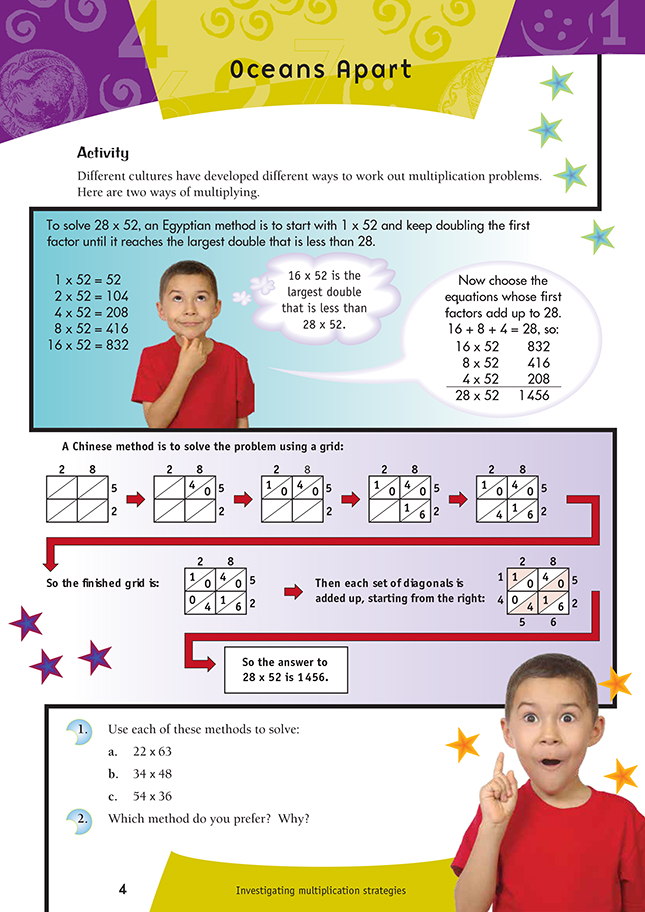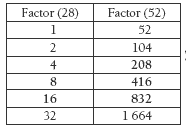This is a level 4 number activity from the Figure It Out series. It relates to Stage 7 of the Number Framework.
A PDF of the student activity is included.
Click on the image to enlarge it. Click again to close. Download PDF (190 KB)
explore different multiplication strategies
FIO, Level 3-4, Number, Book 2, Oceans Apsrt, page 4
This activity is an example of how you can introduce the historical aspect of mathematics to your students. It presents alternative recording methods to the traditional western multiplication algorithm.
The Egyptian algorithm works using doubles and addition. You could format the example shown in the student book as a table:
The Chinese algorithm works using multiplication and then addition. Basic multiplication facts are separated using diagonals across a grid. The diagonals are then used to add the products. Note that, in the grid, a single-digit product is preceded by a zero.
Understanding how and why these algorithms work will help develop students’ number sense. The Egyptian method is based on the distributive property, which is an advanced multiplicative strategy. For example, 28 distributes into 16 + 8 + 4.
The Chinese algorithm relies on place value. The students might like to compare this method to the “pencil and paper” algorithm, which is taught at or beyond the advanced multiplicative stage of the Number Framework. In the standard vertical algorithm for multiplication, each digit is multiplied separately and then the digits in the ones column are added together, those in the tens column are added together, and so on. The main difference is that it is formatted diagonally rather than vertically. Note that in either method, the diagonals in some expressions, for example, 84 x 96 or 212 x 36, add up to more than 9. When that happens, the tens figure is added to the
ones figure to the left. For example, adjacent diagonal totals of 5 and 13 become 6 and 3.
After the students have worked through this page, you could ask them to discuss in pairs why the two algorithms work. In order to see why the algorithms work, the students need to have sound number sense that includes understanding what multiplication is, that is, what they are doing when they multiply two numbers and how numbers can be partitioned and then recombined during a calculation.
Useful websites that explore the number systems of various cultures include:
www-history.mcs.st-andrews.ac.uk/Indexes/HistoryTopics.html
(Note that this is www-, not www.)
www.ethnomath.org/search/browse.asp?type=cultural
After the students have discussed which method they prefer and why, encourage them to think about what other strategies they could use to find the answer to an expression such as 28 x 52. For example, they might use a tens strategy or tidy numbers: 20 x 50 + 8 x 50 + 28 x 2 or 30 x 50 + 30 x 2 – 2 x 52.
Answers to Activity
1. Both methods should produce the same answers. For example:
a. 1 x 63 = 63
2 x 63 = 126
4 x 63 = 252
8 x 63 = 504
16 x 63 = 1 008
16 + 4 + 2 = 22
1 008 + 252 + 126 = 1 386 or
So 22 x 63 = 1 386.
b. 1 632
c. 1 944
2. Preferences and reasons will vary. (For example, you may prefer the Chinese method because it uses basic multiplication and addition facts and can be done very quickly once you understand the process.)


